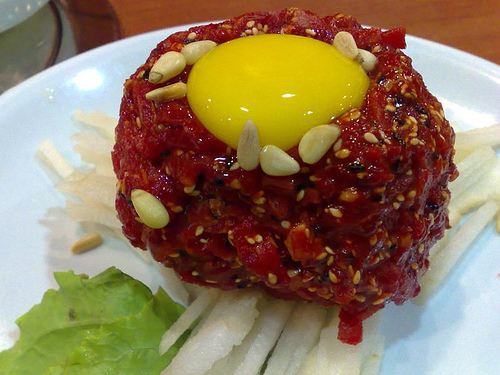In Jan. 1995, a four-year-old girl died in Australia from E. coli O111 after eating contaminated mettwurst, an uncooked, semi-dry fermented sausage; 173 others were sickened.
The company, Garibaldi, blamed a slaughterhouse for providing the contaminated product, while the State’s chief meat hygiene officer insisted that meat inspections and slaughtering  techniques in Australian abattoirs were "top class and only getting better." By Feb. 6, 1995, Garibaldi Smallgoods declared bankruptcy. Sales of smallgoods like mettwurst were down anywhere from 50 to 100 per cent according to the National Smallgoods Council.
techniques in Australian abattoirs were "top class and only getting better." By Feb. 6, 1995, Garibaldi Smallgoods declared bankruptcy. Sales of smallgoods like mettwurst were down anywhere from 50 to 100 per cent according to the National Smallgoods Council.
The outbreak of E. coli O111 and the reverberations fundamentally changed the public discussion of foodborne illness in Australia, much as similar outbreaks of VTEC or shiga-toxin producing E. coli (STEC) in Japan, the U.K. and the U.S. subsequently altered public perception, regulatory efforts and industry pronouncements in those countries.
Yet almost two decades later, history is still being relived.
Japanese media outlets are reporting that two children have died and 56 other people became ill from food poisoning linked to a raw meat dish at a restaurant in central Japan.
One boy died on Wednesday in Fukui Prefecture and the other boy on Friday in Toyama Prefecture after eating dish called Yukhoe served at restaurants run by Foods Forus Co in Kanazawa. The two were infected with E coli O-111 strain.
Yukhoe refers to a variety of hoe (raw dishes in Korean cuisine), which are usually made from raw ground beef seasoned with various spices or sauces. It is basically a Korean steak tartare.
Raw meat is a bad idea.
The company conceded at a news conference that it had failed to carry out hygiene inspections for the last two years of raw meat supplied by a Tokyo-based wholesaler for the dish.
Foods Forus said that it knew its Tokyo-based wholesaler had not sold the beef concerned to be eaten raw, but it served it raw based on its own judgment.
The wholesaler said it was impossible to comment because the person in charge of the sale was absent, Jiji said.
The Japanese apparently have some high-tech bacterial vision goggles that weren’t used in  this case.
this case.
E. coli O111 has shown up in several tragic outbreaks, including the illness of 314 people and one death in Oklahoma in 2008, the sickening of 212 people in New York in 2004 linked to unpasteurized apple cider, and in salad that sickened 56 in Texas in 1999.
